Gardeners beware! As you rest peacefully at night, sinister forces are at work in your beloved plots. Slugs and snails emerge from their hidden lairs, ready to feast on your prized plants. These nocturnal marauders don’t discriminate – they’ll munch on everything from tender seedlings to ripe fruits and vibrant flowers.
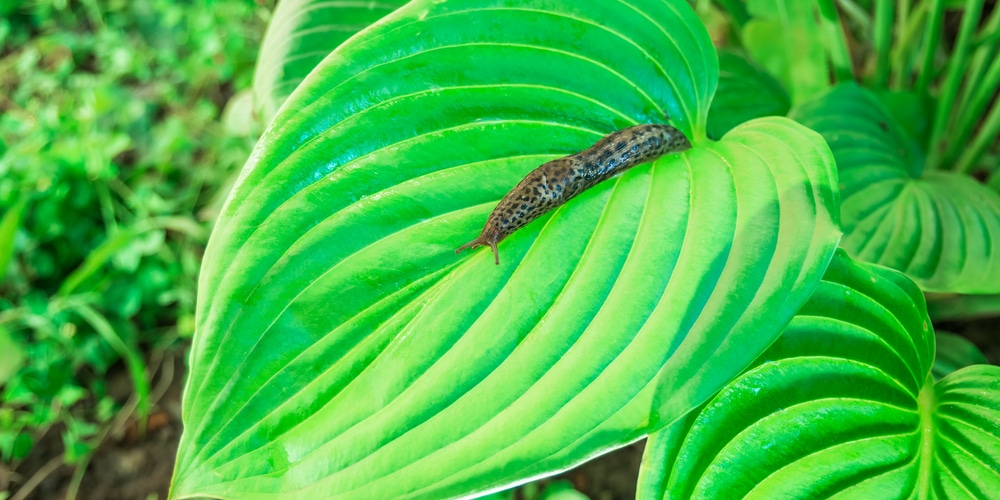
Your garden’s most vulnerable residents are at risk. Those delicate seedlings you’ve nurtured might vanish overnight, leaving nothing but disappointment in their wake.
But don’t despair! With the right knowledge and tactics, you can protect your green sanctuary from these slimy invaders. Get ready to wage war on these garden pests and reclaim your outdoor oasis.
Gastropods in Your Garden: Slugs and Snails Behavior
You might be surprised to learn that those slimy creatures munching on your plants aren’t insects at all. Slugs and snails are actually mollusks, cousins to clams and squids. These slow-moving gastropods share some key features:
• Soft, unsegmented bodies • Slimy mucus coating for moisture retention • A “stomach foot” for locomotion
While snails sport a distinctive spiral shell, slugs go au naturel. This shell-less existence makes slugs more vulnerable to drying out, while snails can better withstand heat and drought.
Don’t let their sluggish pace fool you. These garden visitors can cover impressive distances:
- Average speed: 1 millimeter per second
- Nightly travel potential: Up to 40 feet
Slugs and snails thrive in moist, temperate climates worldwide. You’ll spot them more often during rainy periods when conditions are perfect for reproduction. In cooler northern gardens, these gastropods hunker down for winter, emerging to explore your plants come spring.
Fun fact: The next time you see a snail’s shell, take a closer look. Its spiral follows a fascinating mathematical pattern called a logarithmic spiral!
Spotting Sneaky Slugs and Sly Snails in Your Garden
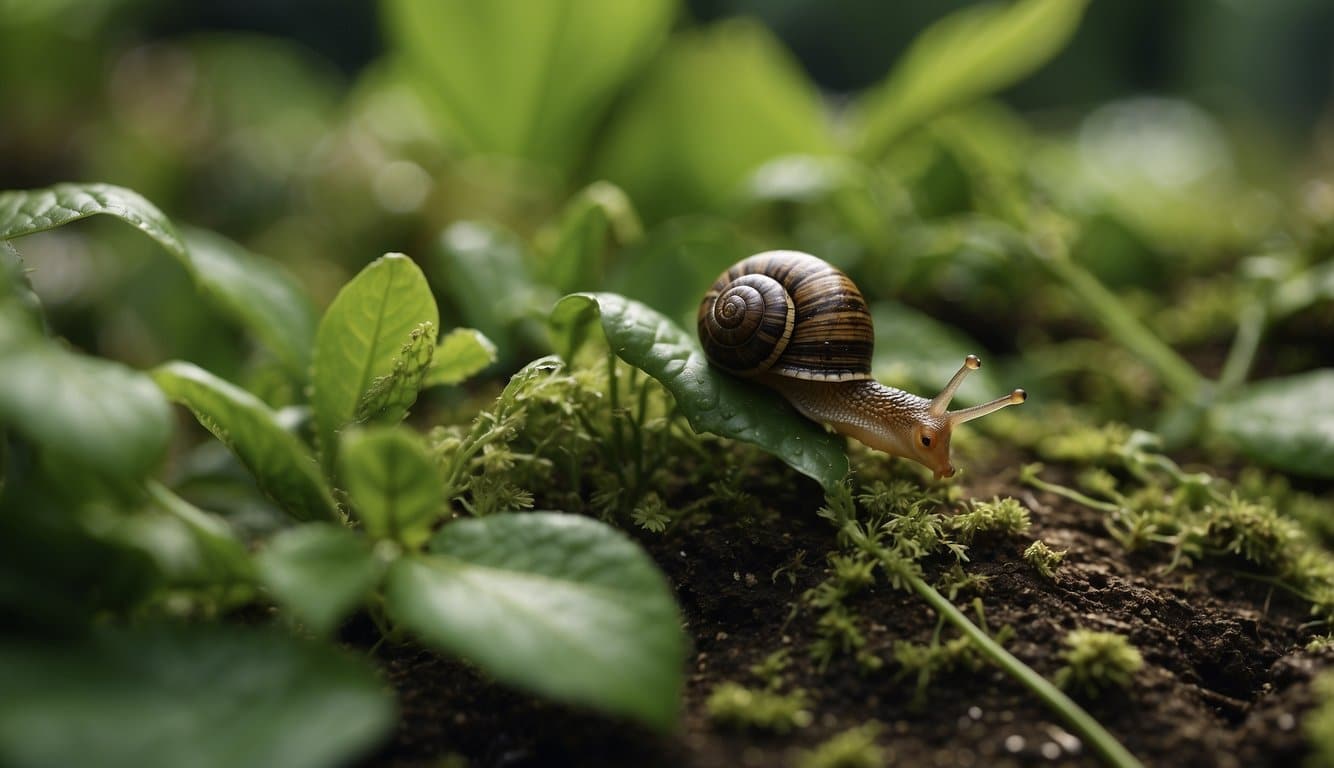
You might have unwelcome gastropod guests if you notice these tell-tale signs:
- Mysterious midnight munching: These critters are nocturnal nibblers, but you might catch them on gloomy days too.
- Holey havoc: Look for irregular holes with smooth edges on leaves – it’s their signature dining style.
- Slimy signatures: Spot shiny trails on leaves and soil – nature’s grossest autographs.
- Seedling decimation: Young, tender sprouts are gastropod gourmet fare.
- Targeted tasties: Keep an eye on these slug and snail favorites: • Leafy greens (lettuce, spinach) • Herbs (basil, parsley) • Ornamentals (hostas, petunias, daisies, lilies) • Fruits (strawberries, tomatoes) • Veggies (beans, carrots, peas)
You’ll often find damage on new growth, even on established plants. Remember, these pests aren’t picky – they’ll chow down on living plants and decaying matter alike. By keeping watch for these signs, you’ll be better equipped to protect your precious plants from these slimy saboteurs.
8 Natural Tactics to Banish Slugs and Snails from Your Garden
1. Clear Away Their Favorite Hideouts
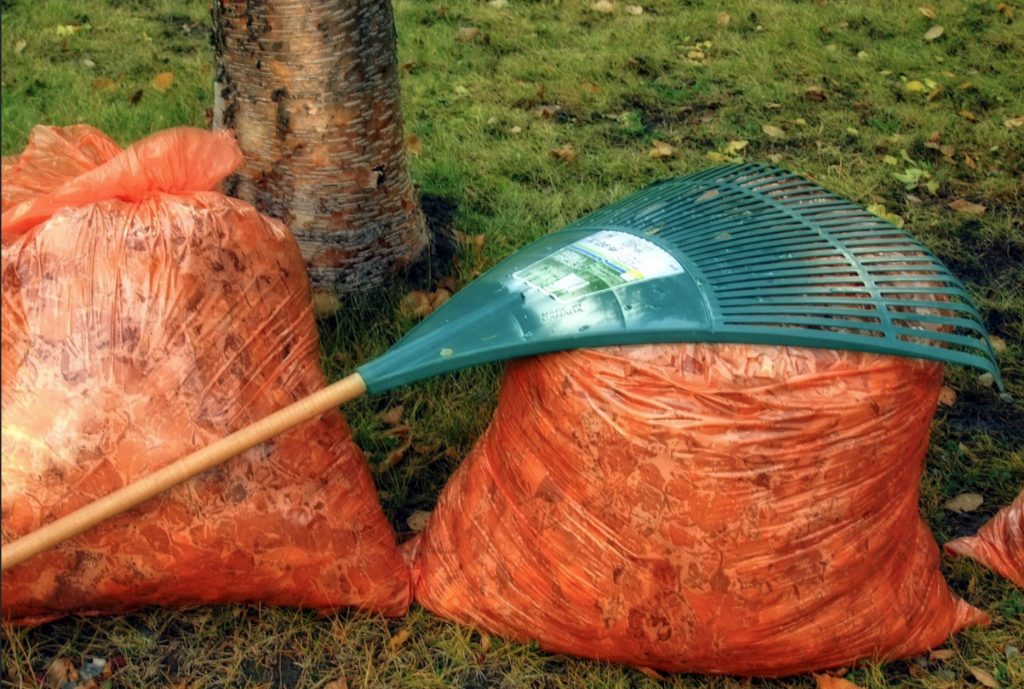
Slugs and snails love dark, damp places to rest during the day. Make your garden less inviting by:
- Raking up fallen leaves regularly
- Moving rocks and stones away from plant beds
- Storing wood piles and lumber elsewhere •
- Avoiding wood chip mulch near vegetables
- Using straw or pine needles as alternative mulch •
- Elevating container gardens and flower pots
- Relocating garden decor away from edible crops
By eliminating these cozy spots, you’ll force slugs and snails to seek shelter elsewhere, reducing damage to your precious plants.
2. Invite Their Enemies to Dinner
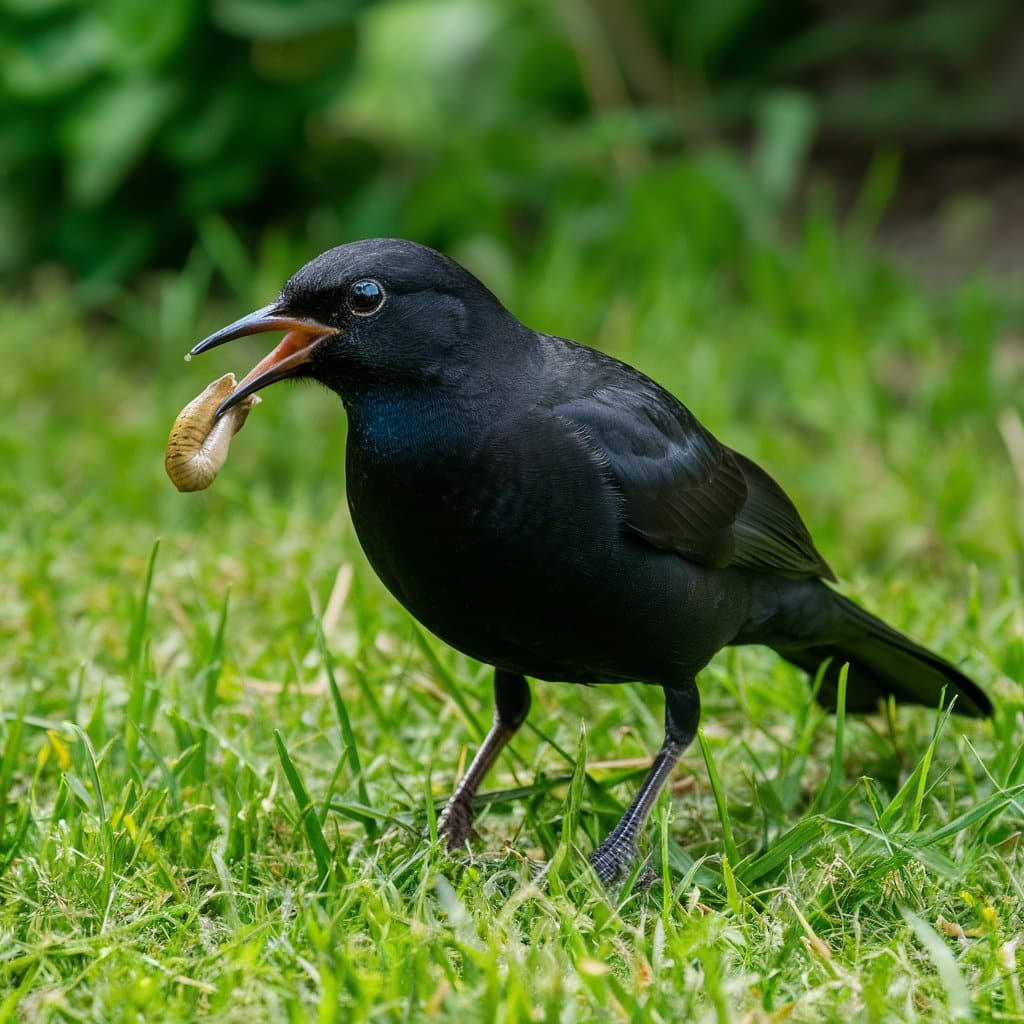
Nature has its own pest control system. Encourage these slug-eating allies to visit your garden:
Birds:
- Blackbirds, thrushes, and starlings love munching on mollusks
- Install a birdbath to attract feathered friends
- Plant bird-friendly flowers and shrubs
- Let chickens, ducks, and turkeys roam your garden
Beneficial insects:
Ground beetles, ants, and fireflies feast on slugs
Create a bug hotel to provide shelter for these helpful critters
Grow native plants to boost insect populations
- Reptiles and amphibians:
- Frogs, toads, lizards, and snakes are natural slug predators
- Add a small pond or marshy area to entice these creatures
By fostering a diverse ecosystem, you’ll naturally keep slug and snail numbers in check.
3. Maintain a Dry Garden Surface
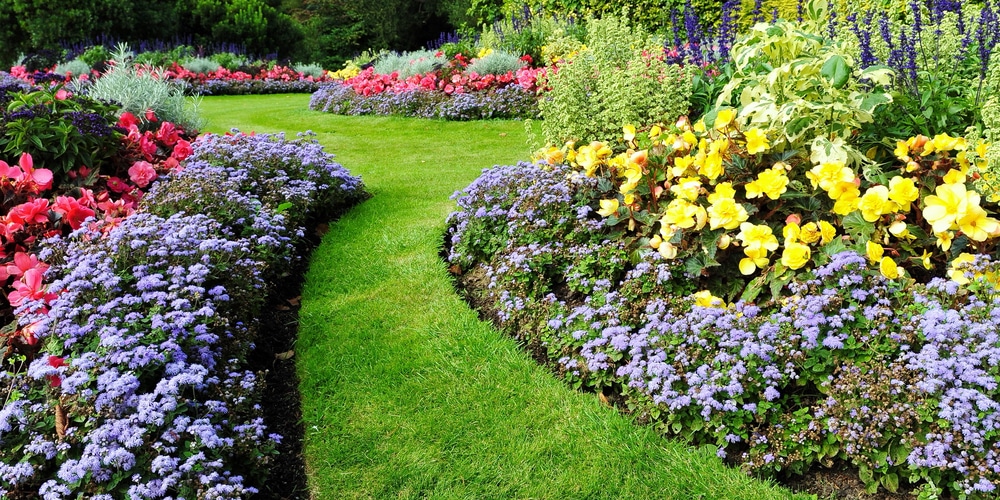
Slugs and snails thrive in moist environments. Keep your topsoil dry to make their travels uncomfortable:
Water only in the morning, allowing the surface to dry before nightfall
Target individual plants instead of soaking entire beds
Use drip irrigation or water rings for precise watering
Avoid overhead sprinklers that saturate large areas
A dry garden surface forces slugs to expend more mucus, slowing them down and discouraging their forays into your vegetable patch.
4. Go on a Nocturnal Slug Hunt
Sometimes, the most effective method is the simplest. Try these hands-on tactics:
- Wait until about two hours after sunset
- Grab a flashlight and head to your garden
- Inspect plants thoroughly, including leaf undersides and stem bases
- Use a spoon to gently remove slugs and snails
- Drop them into a bucket of soapy water or rubbing alcohol
For the first week, conduct nightly patrols. After that, weekly checks should suffice.
Alternatively, toss live slugs into your compost heap. They’ll help break down organic matter and likely stay put, away from your prized plants.
5. Set Up Slug and Snail Lures
Make slug collection easier by creating irresistible traps:
Daytime shelters: • Place cardboard or wooden boards on damp soil • Flip them over daily to collect hiding slugs
Pit traps: • Dig 6-inch deep, 4-inch wide holes around your garden • Cover with cardboard or upside-down flower pots • Add grapefruit or melon rinds as bait
Beer traps: • Fill shallow containers with 1 inch of stale beer • Nestle them into the soil, rim level with the surface • Space traps 10 feet apart throughout the garden • Empty and refill every few days
Remember to check and empty these traps daily to prevent a slug feast in your garden!
6. Create a Copper Barrier
Copper gives slugs and snails a tiny electric shock, deterring them from crossing. Try these copper tactics:
• Wrap copper flashing around individual plant stems • Push the copper ring snugly into the soil, leaving 2 inches exposed • Apply adhesive copper tape around raised bed edges • Protect container plants with copper tape around pot rims
Keep your copper barriers shiny for maximum effectiveness. Clean them occasionally with diluted vinegar to remove tarnish.
7. Deploy Garden Cloches
These bell-shaped plant covers offer dual protection:
- Shield young plants from cold snaps
- Create a physical barrier against slug invasions
Perfect for:
- New transplants
- Freshly sprouted seedlings
- Vulnerable plants in early spring
Look for cloches with: • Clear PVC construction for light penetration • Rotating vents for air circulation • Easy access for watering
Pro tip: Glue fine mesh over vent holes to thwart determined slugs from sneaking inside.
8. Whip Up a Garlic Spray
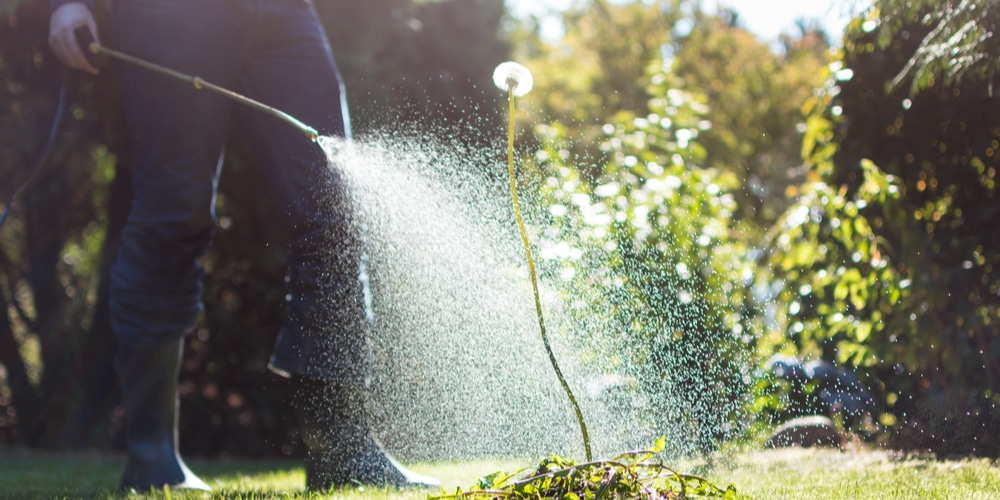
Harness the power of garlic to repel slugs and snails:
Ingredients: • 2 whole garlic bulbs, crushed • 5 cups water
Instructions:
- Boil crushed garlic in water for 4 minutes
- Strain out garlic bits
- Top up to 5 cups with water and let cool
- Dilute 1 tablespoon of garlic liquid in 1 gallon of water
Application: • Transfer to a spray bottle • Apply liberally in early evening • Focus on central stems and surrounding soil
Studies show garlic spray can reduce plant damage by up to 95% compared to untreated crops. It’s a potent, natural solution to keep those slimy pests at bay.
By combining these eight strategies, you’ll create a garden that’s far less appealing to slugs and snails. Your plants will thank you with bountiful harvests and vibrant blooms, free from the telltale holes and ragged edges left by these nocturnal raiders.
Creepy Crawly FAQs: Your Ultimate Slug and Snail Defense Guide
Outsmarting Slimy Invaders Without Harsh Chemicals
You can win the battle against slugs naturally by:
• Setting up beer traps – bury containers filled with stale beer to lure and drown them • Handpicking at night with a flashlight • Creating copper barriers around plants • Spreading diatomaceous earth or eggshells to create rough surfaces
Crafting Your Own Slime-Proof Fortress
Create an effective DIY slug barrier by:
- Mixing 1 part copper sulfate with 10 parts water
- Painting the solution on raised bed edges or pots
- Reapplying after heavy rain
The copper reacts with slug slime, giving them a tiny electric shock.
Planting Your Anti-Slug Squad
Deter slugs by growing:
- Herbs: Rosemary, sage, lavender
- Flowers: Geraniums, fuchsias, begonias
- Vegetables: Garlic, onions, chives
These plants have strong scents or textures slugs dislike.
Concocting a Gastropod-Repelling Potion
Make a snail-repelling spray by blending:
• 1 head of garlic • 2 tablespoons vegetable oil • 1 teaspoon liquid soap • 1 quart water
Spray around plant bases weekly and after rain.
Foiling Container-Climbing Acrobats
Protect potted plants from slugs by:
- Applying petroleum jelly around pot rims
- Placing copper tape barriers on containers
- Setting pots on stands in trays of water
Reclaiming Your Nighttime Garden Paradise
Transform your slug-infested garden by:
• Watering in the morning instead of evening • Installing solar-powered garden lights to disrupt their activities • Encouraging natural predators like birds, frogs, and hedgehogs with wildlife-friendly features
Last update on 2025-06-06 / Affiliate links / Images from Amazon Product Advertising API





